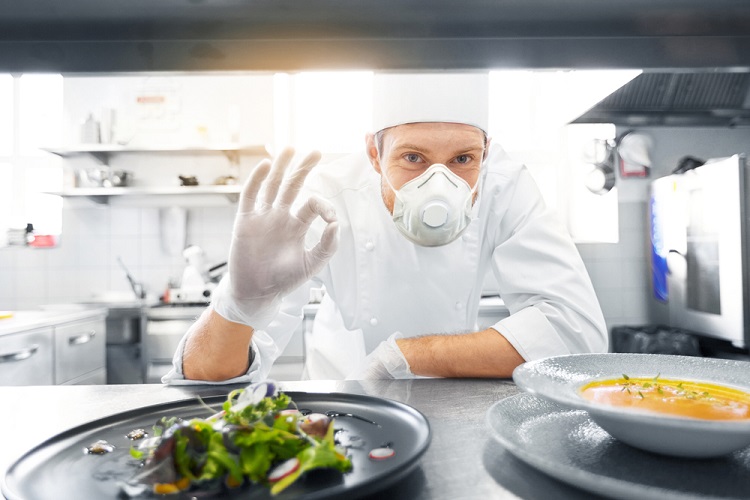Food safety rules are the bedrock of a robust framework designed to protect consumers from potential hazards associated with the production, handling, and consumption of food. These rules establish guidelines and best practices to ensure that food products are safe, wholesome, and free from contamination.Visit IQX for more information. In this, we will explore key food safety rules that form the foundation of a secure and reliable food supply chain.
Table of Contents
Personal Hygiene:
One of the fundamental pillars of food safety is the emphasis on personal hygiene. Food handlers, from chefs in restaurants to workers on farms, must adhere to strict hygiene practices. This includes thorough and frequent handwashing, wearing clean and appropriate clothing, and maintaining overall personal cleanliness. By minimizing the potential transfer of harmful microorganisms from individuals to food, personal hygiene plays a crucial role in preventing foodborne illnesses.
Proper Food Handling and Storage:
Correct food handling and storage practices are imperative for maintaining the safety and quality of food products. This involves storing perishable items at the right temperatures, separating raw and cooked foods to prevent cross-contamination, and employing safe handling practices to avoid spoilage. Adequate refrigeration, freezing, and proper packaging contribute significantly to the prevention of foodborne illnesses.
Cross-Contamination Prevention:
Preventing cross-contamination is a critical rule in food safety. This involves keeping raw and cooked foods separate, using different cutting boards and utensils for different types of foods, and ensuring that surfaces and equipment are thoroughly cleaned and sanitized to avoid the transfer of harmful microorganisms from one area to another.
Safe Cooking Practices:
Safe cooking practices are paramount for eliminating harmful bacteria and pathogens from food. This rule includes cooking food to the appropriate internal temperature, using food thermometers to verify doneness, and following recommended guidelines for specific types of food. Properly cooked food not only ensures its safety but also contributes to its palatability.
Hazard Analysis and Critical Control Points (HACCP):
The HACCP system is a preventive approach to food safety that involves identifying, evaluating, and controlling hazards throughout the food production process. This rule emphasizes critical control points where interventions can be applied to prevent, eliminate, or reduce hazards to acceptable levels. HACCP is widely acknowledged as an effective method for ensuring food safety in various industries.
Supplier Control and Traceability:
Managing and controlling suppliers within the food supply chain is crucial for overall food safety. This rule involves assessing the safety practices of suppliers, conducting regular audits, and establishing traceability systems to track the origin and movement of food products. This ensures that organizations can respond swiftly to safety concerns and maintain the integrity of the supply chain.
Allergen Management:
Managing allergens is a key rule to protect individuals with food allergies. This involves clearly labeling food products that contain common allergens, segregating allergenic ingredients, and educating food handlers about the importance of preventing cross-contact. Effective allergen management is essential for providing accurate information to consumers and preventing allergic reactions.
Cleaning and Sanitization:
Maintaining clean and sanitary environments in food handling and processing areas is a non-negotiable rule in food safety. Regular cleaning of equipment, surfaces, and utensils, along with the use of appropriate sanitizing agents, is essential for preventing the growth and spread of harmful bacteria and ensuring a hygienic food production environment.
Food Safety Training and Education:
Education and training programs play a crucial role in instilling a culture of food safety. This rule ensures that individuals at all levels of the food industry are well-informed about proper hygiene, food handling techniques, and the significance of adhering to food safety protocols. Well-trained personnel are an essential asset for maintaining high standards of food safety.
Regulatory Compliance:
Adhering to food safety regulations and standards is both a legal and ethical responsibility for food businesses. This rule involves understanding and implementing relevant local, national, and international regulations. Compliance ensures that organizations meet specific criteria for food labeling, packaging, and overall safety standards, contributing to the overall safety of food products.
Conclusion:
Food safety rules serve as the cornerstone of a resilient and trustworthy food supply chain. By adhering to these rules, stakeholders in the food industry contribute to the well-being of consumers and the overall integrity of the global food supply. As awareness of food safety continues to grow, the commitment to implementing and upholding these rules remains a shared responsibility among producers, regulators, and consumers alike, fostering a dining landscape where trust and safety are paramount.

